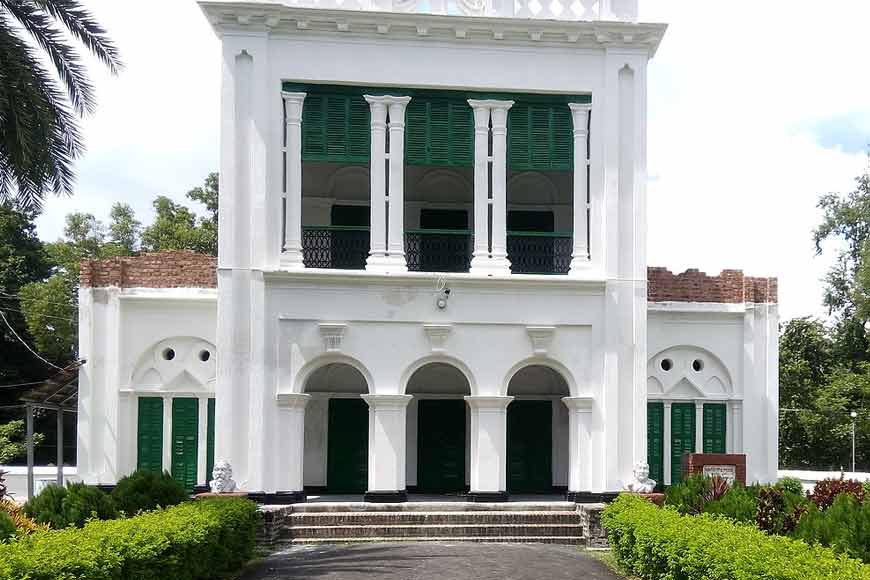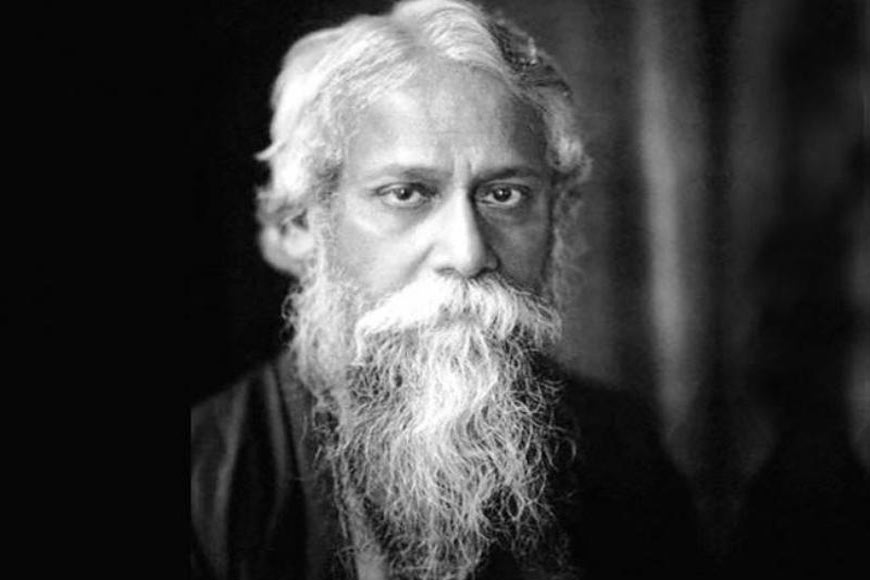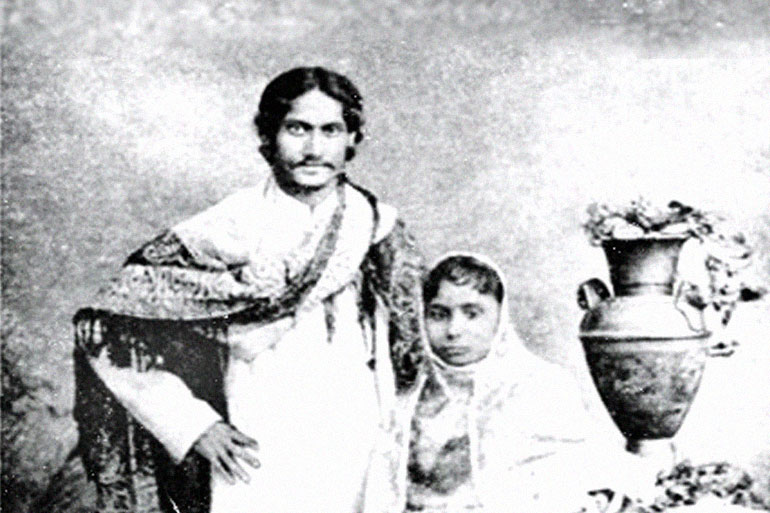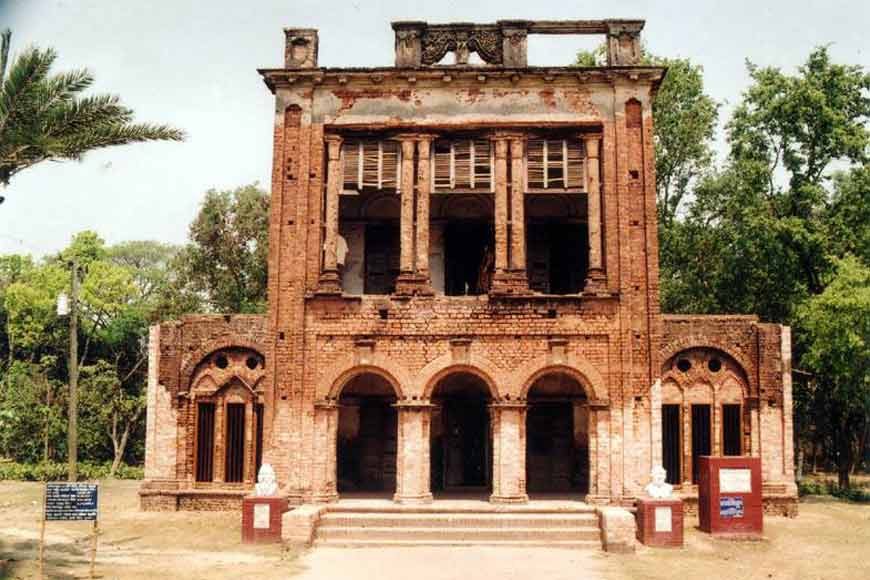Dakshindihi evokes fond memories of Tagore family’s connection with Bangladesh - GetBengal story

Dakshindihi Rabindra Complex after restoration
AA narrow road barely touches the Dhaka-Khulna highway and then bifurcates and penetrates through the verdant paddy fields. Both sides of the deserted asphalt road are lined with rows of cedar, teak, albizia lebbek and mahogany trees that sway their crown in the soft breeze and greet visitors who are on their way to the Dakshindihi village, located a kilometer and a half from the highway. A few isolated farmhouses can be spotted in the distance that seems to break the monotony of the emerald fields. Going further down the spiral road, one approaches a huge estate of the erstwhile property owners. The sprawling complex houses the manor of the Roy Chowdhury family, the zamindar of Dakshindihi. At present the villa has been converted into a museum named 'Dakshindihi Rabindra Complex' and is a pilgrimage for all devotees of Rabindranath from across the world.
Dakshindihi is a village under Phultala Union Parishad of Phultala Upazila in Khulna, Bangladesh. In British India, the Phultala village was under Khulna district of then-Jessore Mohakuma. Rabindranath’s family was closely associated with Dakshindihi village. Rabindranath's paternal grandmother, Digambari Devi, the wife of Prince Dwarakanath Tagore, his mother Sarada Sundari Devi and his paternal aunt by marriage, Tripura Sundari Devi, all hailed from Dakshindihi. Even Rabindranath's wife, Bhabatarini Devi aka Mrinalini Devi also hailed from Dakshindihi. The residence of Tagore's father-in-law, Beni Madhab Roy Chowdhury has now been transformed into Dakshindihi Rabindra Complex. Tagore visited this village several times in his lifetime.
 Rabindranath Tagore
Rabindranath Tagore
Gnyanadanandini Devi, wife of Rabindranath’s elder brother Satyendranath was very close to Rabindranath. Gnyanadanandini Devi’s parental home was at Narendrapur in Jessore and she, along with her gang of Tagore family members took the initiative to find a Pirali bride for her 22-year-old brother-in-law, ‘Robi.’ The group zeroed in on nine-year-old Bhabatarini aka Phuli, daughter of the zamindar of Dakshindihi, Beni Madhab Roy Chowdhury. The couple tied the knot on December 9, 1883 at Jorasanko, Calcutta, according to the customs of the Brahmo Samaj. Despite the wide age difference, this union would prove transformative for both individuals, setting the stage for a remarkable partnership.
The two-storied palatial building stands as a silent testimony of a bygone era, that reanimates annually on May 7 (25th Baishakh), the birth anniversary of Tagore and on August 7 (22nd Shravan), his death anniversary. On these two occasions, scholars, academicians and people from all walks of life converge here in large numbers and their presence liven up this stately residence. Two bust sculptures of the poet and his wife have been installed on both sides of the stairs of the building. A quatrain from Rabindranath’s poem is inscribed on a plaque. It reads: Ke loibe mor karjo, kahey sandhya-rabi/ Shuniya jagat rohay niruttor chhobi/ Maatir prodeep chhilo; say kohilo swami/ Amar jetuku sadhya koribo ta aami - (The setting sun wondered who would enlighten the world in his absence, the whole world remained mum, when a small earthen lamp replied, O Lord, I shall do whatever is within my limited capability!)
Rabindranath’s ancestor and progenitor of the Thakur (Tagore) clan, Jagannath Kushari hailed from Pithabhogh in Khulna. In the beginning of the 16th century, he left his village and set out for Dakshindihi where he married Sundari Devi, the daughter of Shukdev Roy Chowdhury. She was the granddaughter of the local zamindar Dakshinanath Roy Chowdhury, and settled in Dakshindihi, named after the zamindar. For the next 200 years, the Kushari family flourished in Dakshindihi.
 Rabindranath Tagore and his wife Mrinalini Devi
Rabindranath Tagore and his wife Mrinalini Devi
Jagannath Kushari’s descendant Panchanan left Dakshindihi and migrated to the newly developing port town of Gobindapur, on the banks of Adi Ganga. Gobindapur was at that time a small fishing village whose inhabitants were all of the so-called low caste. Seeing a Brahmin family settle in their midst they felt elated and bestowed him with all the honour. Panchanan found a lucrative occupation in supplying provisions to the British, Portuguese and Dutch ships that sailed up the river.
At the edge of his life, Neelmani Thakur, the grandson of Panchanan Thakur, built a mansion at Jorasanko in 1784, exactly 77 years before Rabindranath was born. Neelmani Tagore was Prince Dwarakanath Tagore’s grandfather. Although the Kusharis’ had emigrated from Dakshindihi, they had to frequent the village time and again for matrimonial alliances. Rabindranath's father-in-law, Benimadhav Roy Chowdhury shifted to Calcutta and set up permanent residence here long before Partition. His only son, Nagendranath aka Felu Babu used to visit the ancestral estate at Dakshindihi occasionally. A couple of Felu Babu's sons still lived in Dakshindihi and managed the landed property but in 1940, all the members of the Roy Chowdhury family migrated from Dakshindihi and moved to Calcutta.
With the Partition, one of the largest mass migrations in history began. Hindus on the former East Pakistani side migrated to India and Muslims on the Indian side migrated to Pakistan. Each side attacked the other in a frenzy of violence. The vast landed property at Dakshindihi was left unprotected. Taking advantage of the situation, local goons illegally occupied the house and the adjoining property with the help of corrupt local politicians. The heritage property remained under the possession of the hooligans for the next 50 years until it was finally reclaimed on November 14, 1995 based on public demand. After renovation, Benimadhab Roy Chowdhury’s residence and the adjoining land, once frequented by Rabindranath and his family, was named Dakshindihi Rabindra Complex and opened to the public.
 Original construction of the Rabindra Complex
Original construction of the Rabindra Complex
On Thursday, November 18, 1999, the Government of the People’s Republic of Bangladesh officially recognized the Complex. Dakshindihi's name was attached to various posters, banner festoons, memorials and pamphlets published by the Ministry of Culture. With the cooperation of local journalists and people from the cultural and literary sphere, Dakshindihi Rabindra Complex was born and over the years, it isevolving intoa robust cultural center. The two-storied building within the Complex has been tastefully decorated and renovated extensively after receiving funds from the government. It has been turned into a museum and a photo gallery. Many rare photographs of Rabindranath Tagore and members of his family are showcased here. A large number of important documents about Tagore’s publications are also on display.
Since its inception, the organization has been working tirelessly to develop a non-communal and democratic spirit. Every year, the poet’s birth anniversary is celebrated with great fervor. A three-day festival is hosted that includes folk fairs, discussions, symposiums and cultural shows. Authors, researchers working on Rabindranath, artists, singers and dancers from all over the world are invited to these annual programmes. The organizers also celebrate the poet’s wedding anniversary and locals and Rabindranath fans have an unwritten invitation to participate in these cultural shows.










